We have made an introduction to magnets earlier. We read about natural magnets, and the earth's magnetic field. Now let us read about artificial magnets.
What is an artificial magnet?
The word tells it all. It is a magnet created by humans using some technique. Natural magnets, or lodestones, are found naturally. They are of random shapes like stones. But artificial magnets can be bar-shaped, horseshoe-shaped, spherical, cylindrical, flat disc shaped, etc.

Magnetic materials
All matter is made of atoms. Negatively charged electrons orbit around the nucleus. This movement constitutes a current. The circular direction of the current creates a magnetic field. In all materials, the magnetic field directions point in all directions at random, cancelling each other. This is why normally all materials are nonmagnetic. By using certain methods or passing current, some types of materials can be made into magnets. A magnet is an object where most of the atoms are arranged such that their individual magnetic directions are all aligned in one direction. A magnetic material is one that can be converted into a magnet, either temporarily or permanently.
Types of magnetic materials
Depending on the strength to which a magnetic material can be magnetised, they are classified as:
- Ferromagnetic: They have strong magnetic properties. They can be magnetised easily, and retain their magnetism for a long time. They retain their magnetisation even after the external field is removed. Permanent magnets are made of these materials. Examples are iron, nickel, cobalt.
- Paramagnetic: They are weakly attracted by a magnetic field. They magnetisation disappears once the external field is removed. Oxygen, sodium, platinum are some examples.
- Diamagnetic: They are weakly attracted by a magnetic field, but in the opposite direction. This means a pole is created such that is opposes the external field. They are repelled by a strong magnetic field. Water, mercury, gold, silver are some examples.
Ferromagnetic materials can be soft or hard. Temporary magnets are made of soft ferromagnetic materials, while permanent magnets are made of hard ferromagnetic materials.
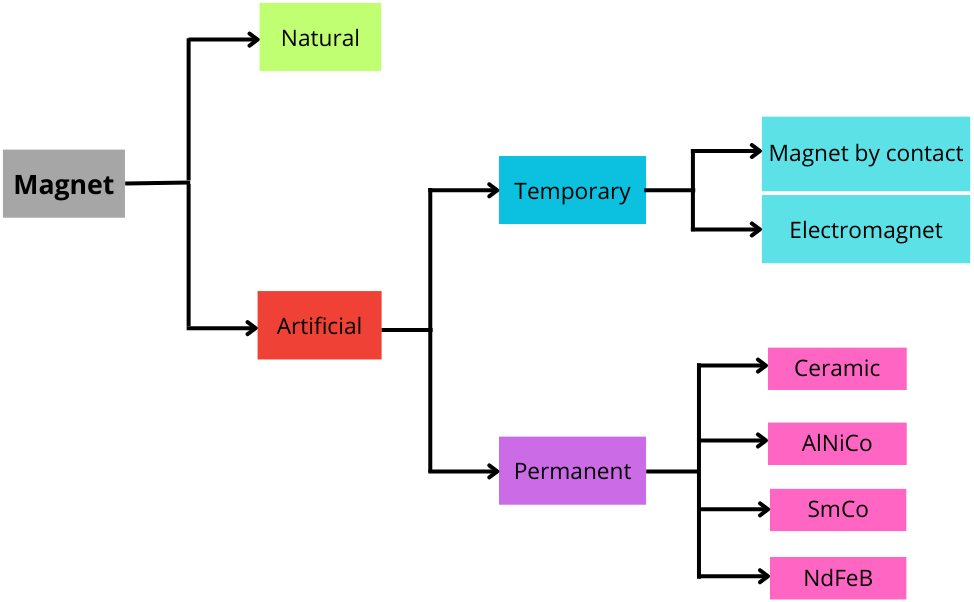
Permanent magnets
A permanent magnet does not lose its magnetic property easily. They are made of hard ferromagnetic materials. There are mainly four types of commercially available permanent magnets.
- Ceramic: They are also called Ferrite magnet. They are inexpensive and the weakest of all permanent magnets. They are used in toys and fridge magnets.
- AlNiCo: They are made by blending Aluminum, Nickel and Cobalt. They are commonly used magnets. They are used in motors, speakers, etc.
- SmCo: They are called Samarium Cobalt. They are stronger than AlNiCo magnets, but are brittle and mechanically weak.
- NdFeB: They are made by blending Neodymium, Iron and Boron. They are the strongest of all types.
Temporary magnets
As the name tells, they do not retain their magnetism for a long time. Once the source of the field is removed, they lose their magnetic property. They are made of soft ferromagnetic materials. An iron nail attached to a magnet will also behave like a magnet. It can attract other iron nails. But once it is separated from the magnet, it loses its magnetism and the other objects will fall down.
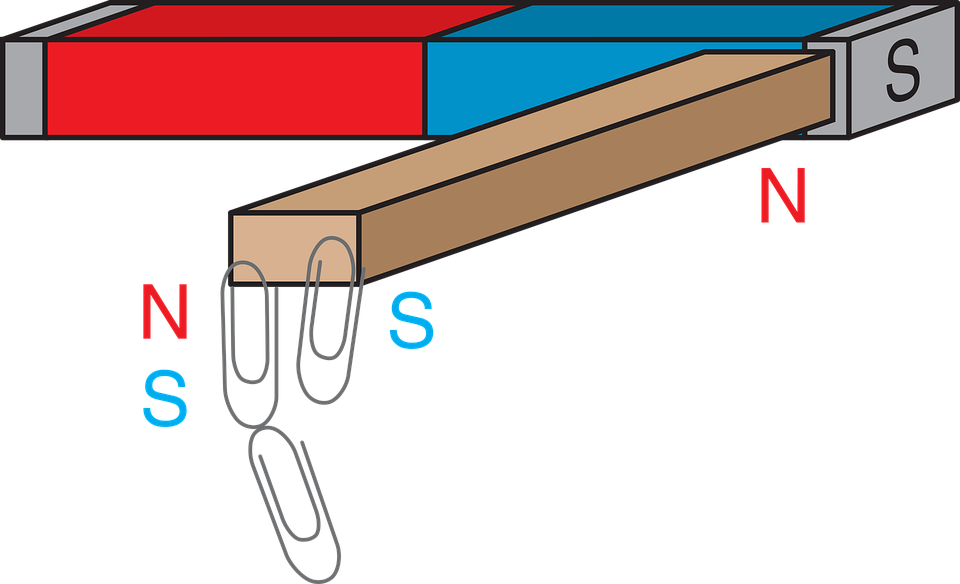
Electromagnet
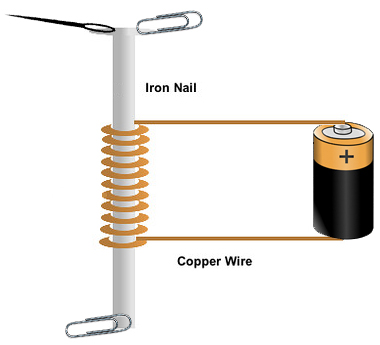
It is a temporary magnet. The “electro” term says that it is created due to electric current. From this figure, we can see that current is passed through a wire in the form of a coil. This coil is called a solenoid. A soft ferromagnetic material is passed through the solenoid. The current creates a magnetic field, and makes the material also magnetic.
The material is a magnet as long as current continues to flow. Once it is switched off, it loses its magnetism.
The position of the poles depends on the direction of the current in the solenoid. The poles are identified by the right hand rule.
- Curl the right hand and extend the thumb up.
- If the current direction is along the direction of the fingers in the anti-clockwise direction, then the extended thumb shows the direction of the N-pole of the created magnetic field.
- If the current direction is in clockwise direction, then the thumb points opposite or away from us. The thumb always points to N-pole, and the other end is the S-pole.

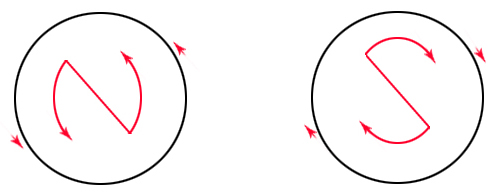
Advantages of electromagnets
- The poles of the electromagnet can be reversed by reversing the direction of current.
- The strength of the field can be changed by changing the amount of current.
- The magnetic property can be removed when not needed. For example, in a crane lifting scrap iron, the electromagnet pulls the iron. At the time of unloading, simply switching off the supply will demagnetise the crane and unload the iron.
- The magnetic strength varies according to the strength of the current passing. This has applications in speakers, magnetic tapes, computer disks, etc.
Applications of magnets
- Speakers use both permanent and electromagnets to convert electric current into sound.
- The directive property is used in compass to show direction.
- Weak magnets are used to close fridge doors.
- Electromagnets in cranes lift iron materials.
- Magnetic tapes store data, audio and video.
- Computer hard disks store data in magnetic fields.
- Motors and generators work using electromagnets.
- Magnetic Resonance Imaging (MRI) is used to scan the body. Magnetic therapy is used cure many ailments.
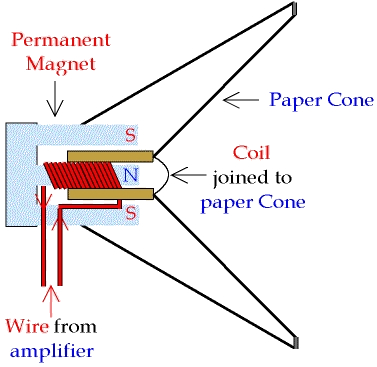
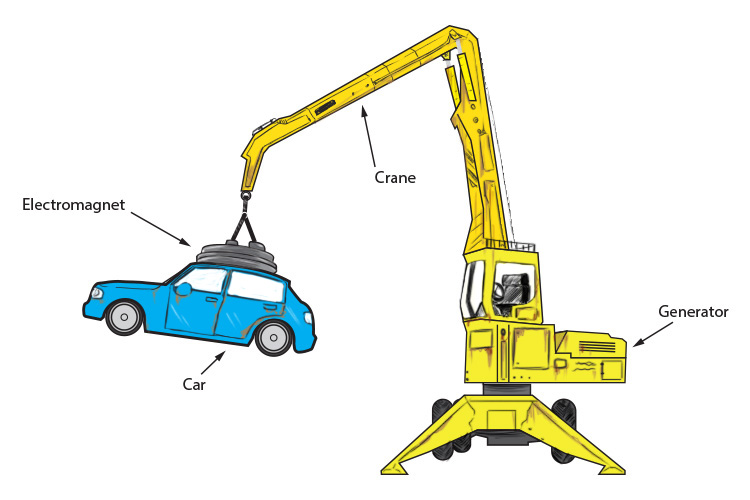




Pingback: Joe Goodall
Good read
The article gives right info about magnets. Nice explanation. Your site is not showing well in Google, have it search engine friendly for more visitors.
Itís hard to come by well-informed people in this particular topic, but you sound like you know what youíre talking about! Thanks
F*ckin’ tremendous issues here. I’m very glad to look your article. Thank you so much and i am taking a look ahead to touch you. Will you kindly drop me a e-mail?